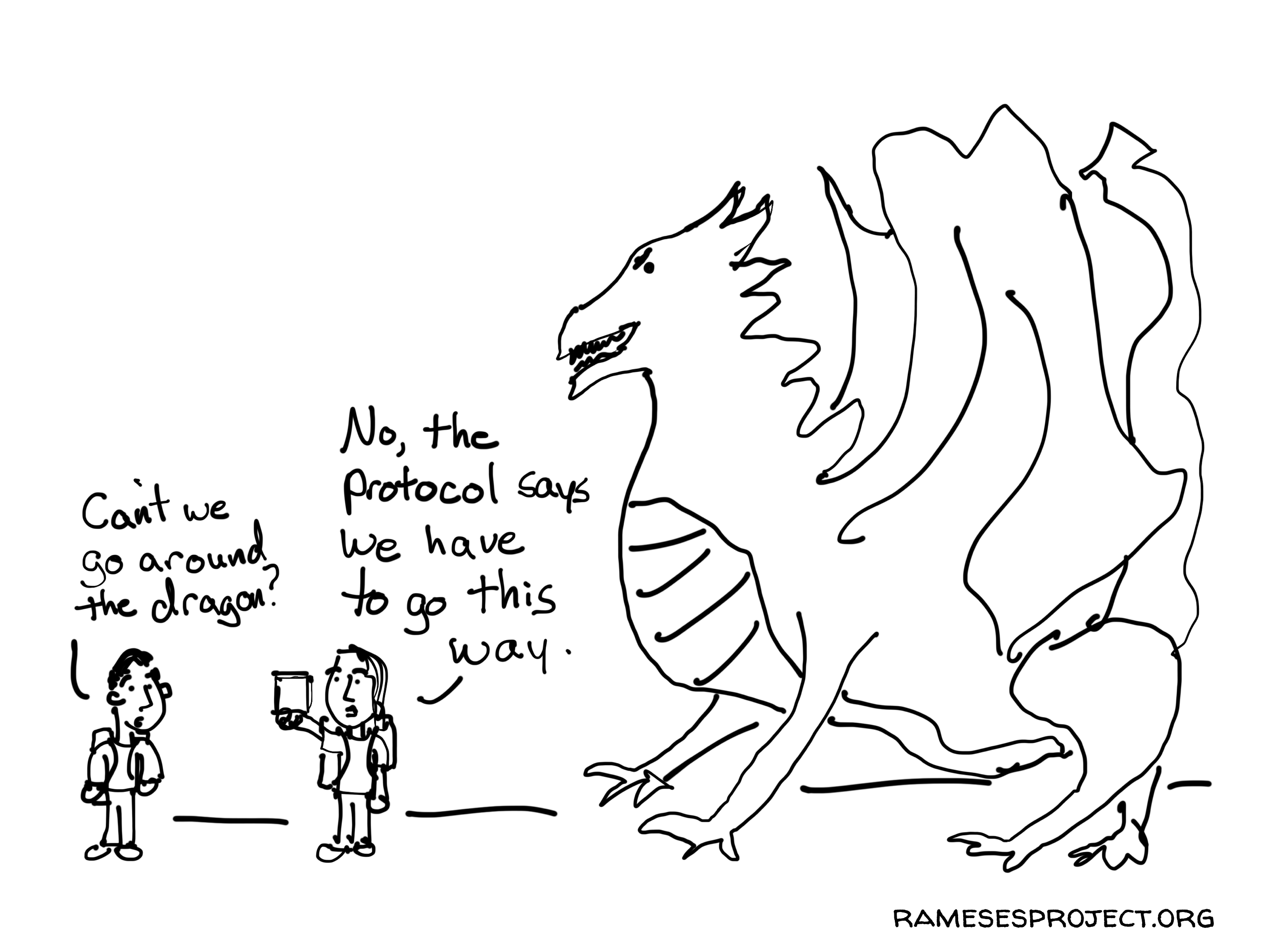This is an Eval Central archive copy, find the original at freshspectrum.com.
Back in 2017 I was commissioned by the RAMESES II project (funded by *NIHR) to draw a series of cartoons on realist evaluation. They have been made available for royalty-free use at ramesesproject.org, along with a collection of other realist evaluation resources.
In this blog post I want to take you through my cartoon illustration process using this project as an example. The cartoons were created through direct collaboration with the wonderful Joanne Greenhalgh and Ana Manzano of the University of Leeds. The full RAMSES II project provided insights throughout the process.
*The RAMESES II project was funded by NIHR HS&DR 14/19/19. The views expressed are those of the author(s) and not necessarily those of the NHS, the NIHR or the Department of Health.
Starting with the Illustration Challenge
A cartoon illustration project always starts with something to illustrate. In this case it was a series of briefs on realist evaluation.
The challenge was to develop a series of cartoons inspired by the content within the briefs. To get a sense of my process, let’s focus on one of those briefs.
A realist understanding of programme fidelity [PDF].
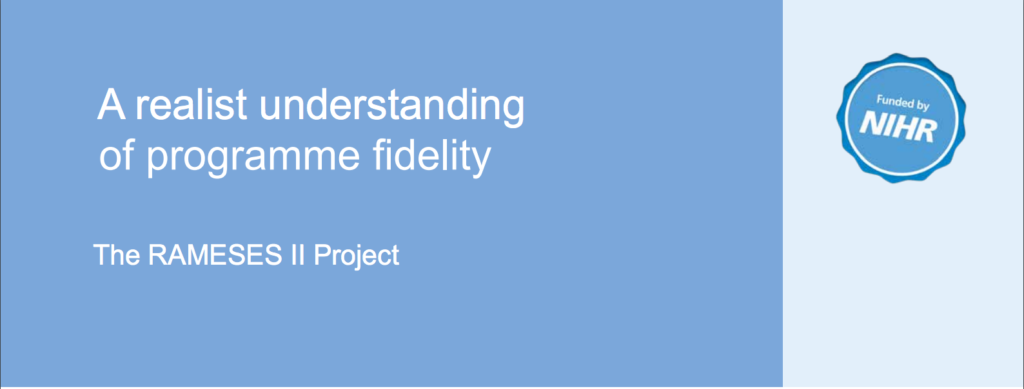
Finding cartoon inspiration and narrowing the scope.
In any substantive piece of literature, brief, or written report there is usually a ton that could inspire a cartoon.
The challenge is to figure out the important pieces and the ones that create the best cartoons. Good illustration is about supporting the words, not replacing the words.
I find that the best cartoon illustrations usually come from the challenges, problems, and confusions. My philosophy is to illustrate the problem, and the reader will read the text in search of the solution.
To find the key challenges I turn to the experts. Through conversation I engage them in the process by finding where to focus. Ultimately we narrow the scope.
Here is one of those areas of narrow focus. This certainly helped to inspire the cartoons I have shared below.
Common confusion: illusion of control (that you can standardise programmes and control the context into which they are implemented either within an evaluation or the real world). RCTs are ardent believers in this illusion and think its possible to create at ‘closed system’ by controlling everything about context so that you can have ‘programme on’ compared to ‘programme off’ and everything else is the same except the existence of the programme. This idea has been transferred from drug trials to complex social programmes.
Sketching out the concepts.
Before diving into drawing the final cartoon, I start with a pen and my notebook.
With the low tech approach I can come up with more concepts than I could if started with my iPad. And if a cartoon doesn’t work, or the client doesn’t like a certain cartoon, we can cut it here instead of putting more effort into the process.
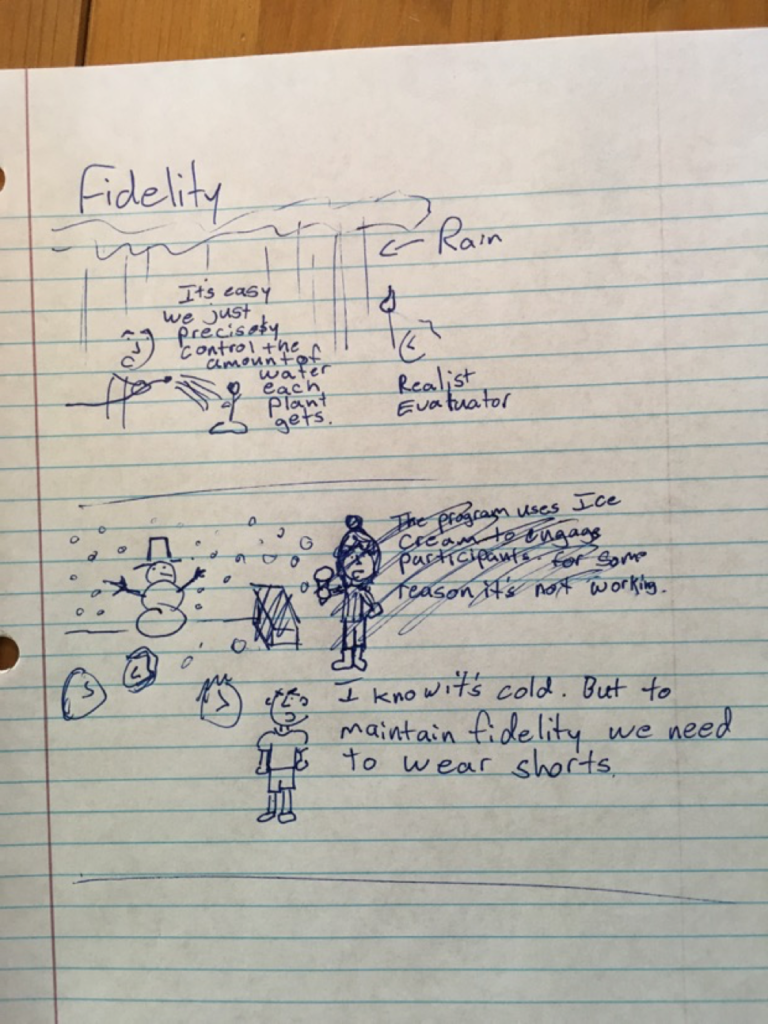
Refining and completing.
After drawing the sketches and sharing with my client we have another conversation. This time we talk about the concepts (what do they like? what don’t they like?).
At this point we tweak and cut. And sometimes the sketches lead to more concepts. Cartoon illustration is an iterative process, but hopefully with each revision we get a better product.
Here are a couple of the final fidelity cartoons. What do you think?
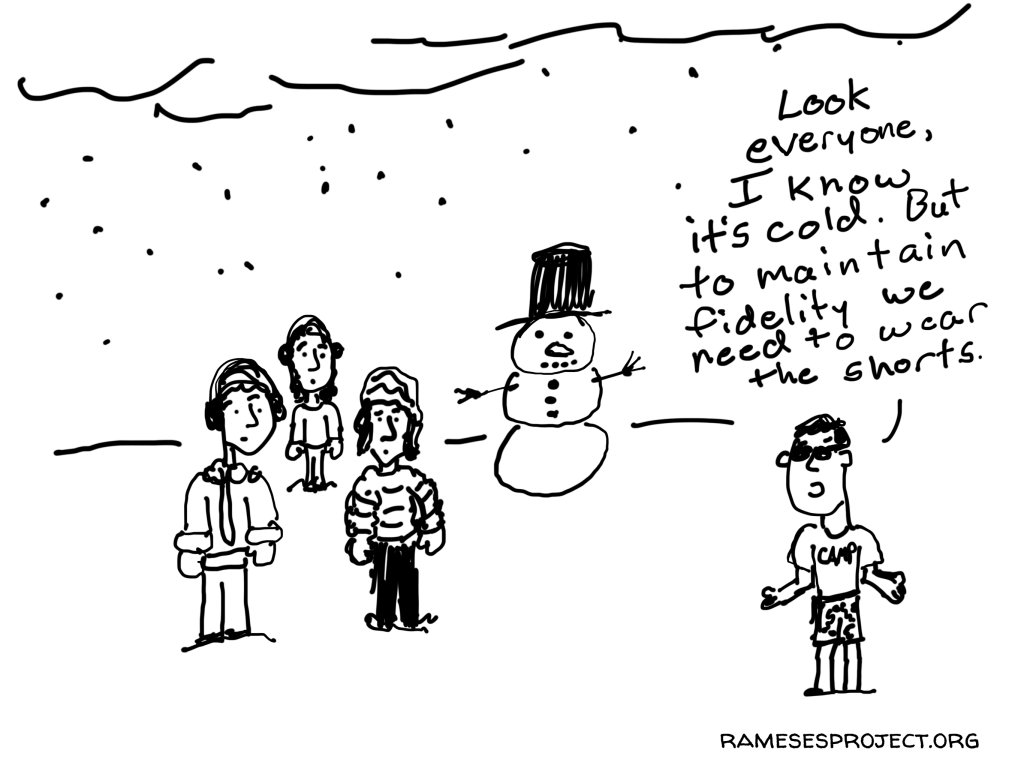
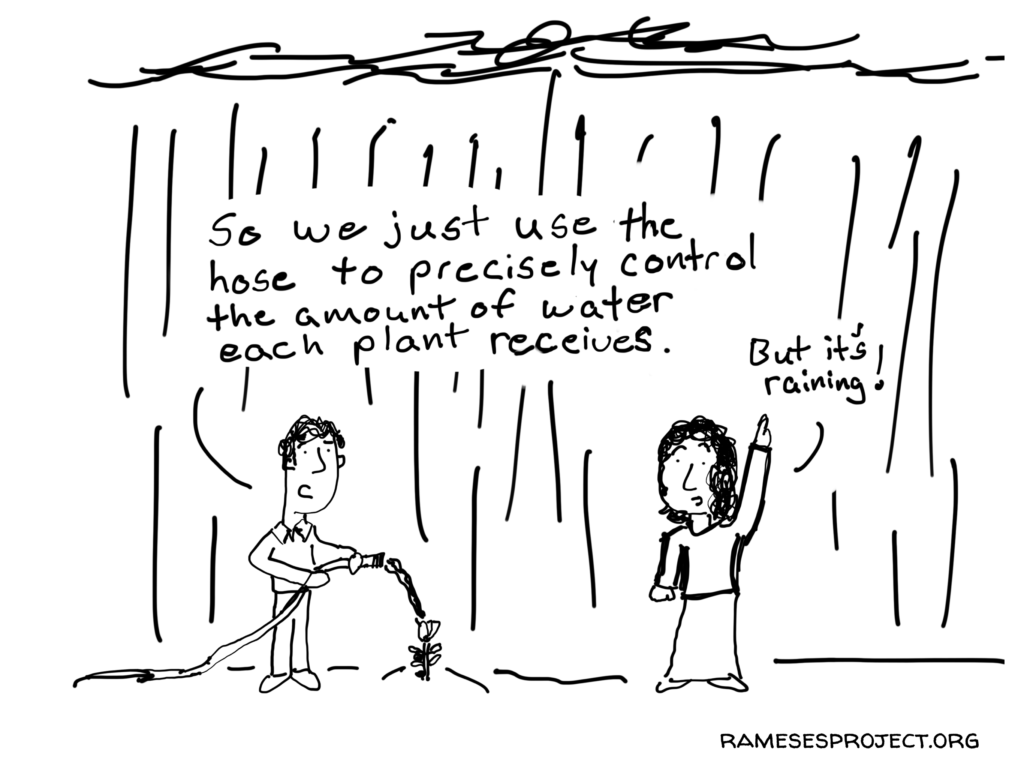
A note from Joanne
We really enjoyed working with Chris. Not only was it fun, but it challenged us to think about what we really wanted to communicate about realist methods. The idea of illustrating ideas or issues people found confusing or difficult really resonated with us, as that had been one of the main reasons for embarking on the whole project in the first place. It felt like a genuine collaboration and I’m really pleased with what we have produced.
Here are a few more of my favorite comics from the collaboration.
What a realist reviewer looks like.
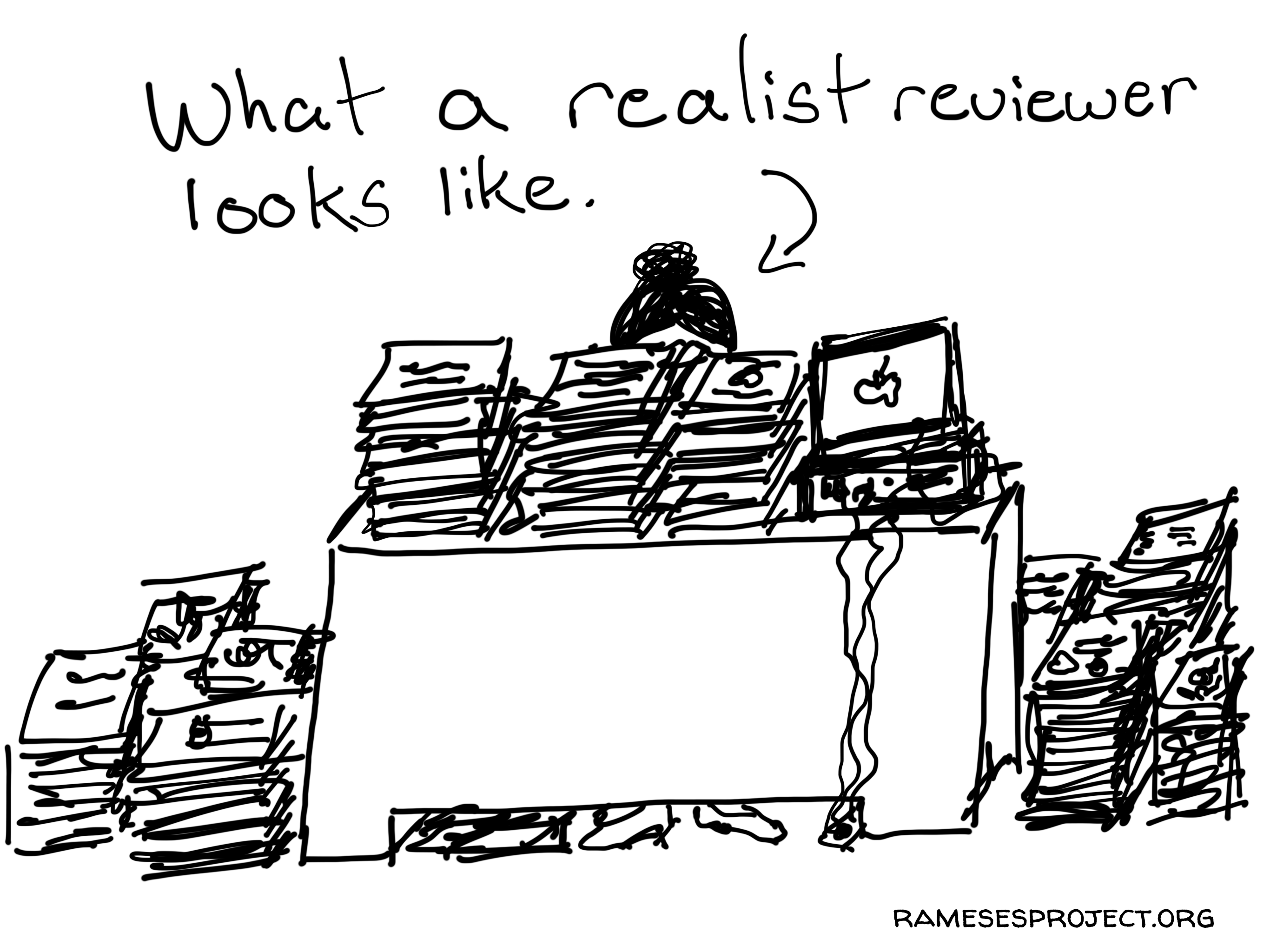
Realist recipe.
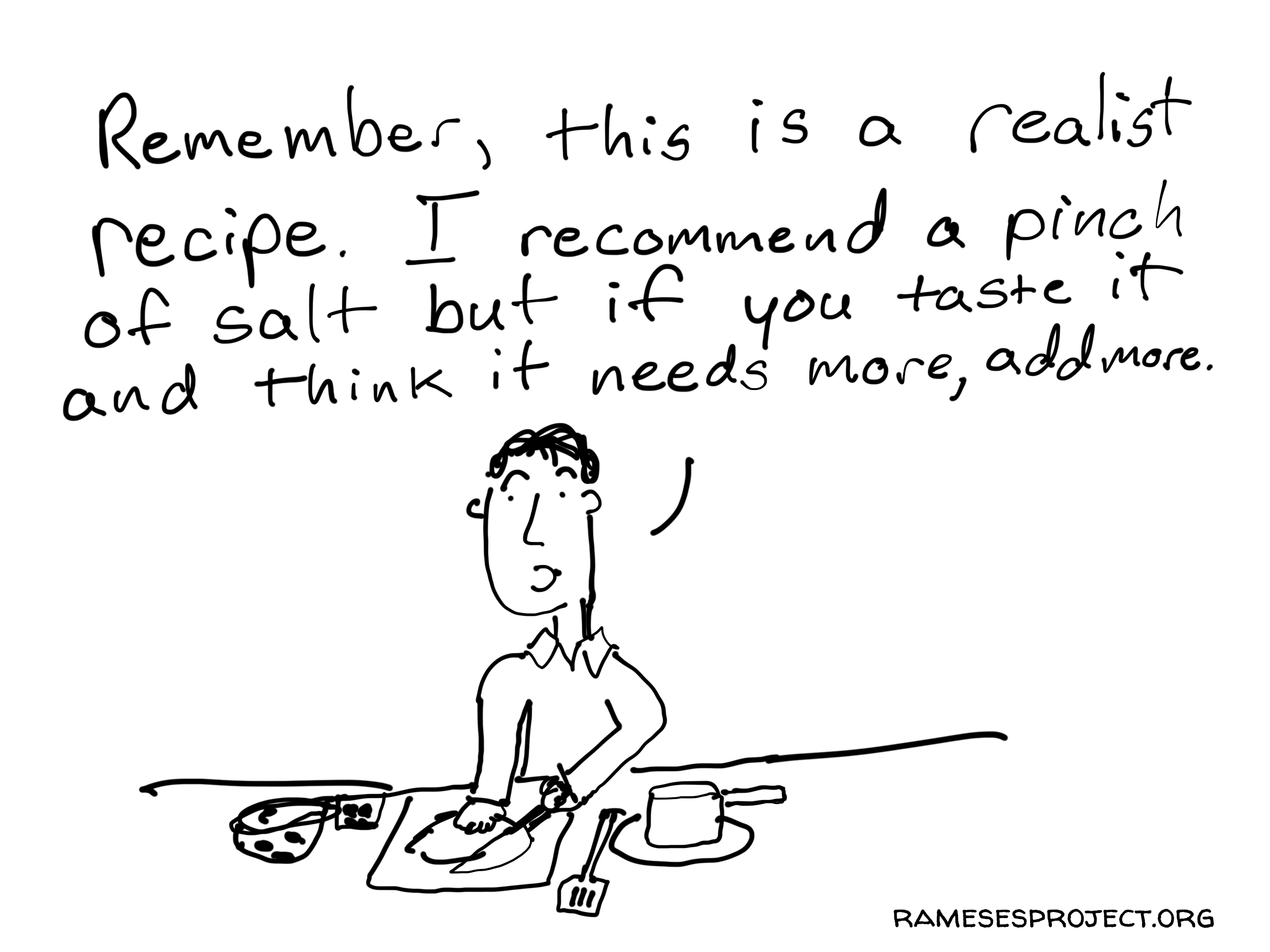
The protocol says we go this way.
